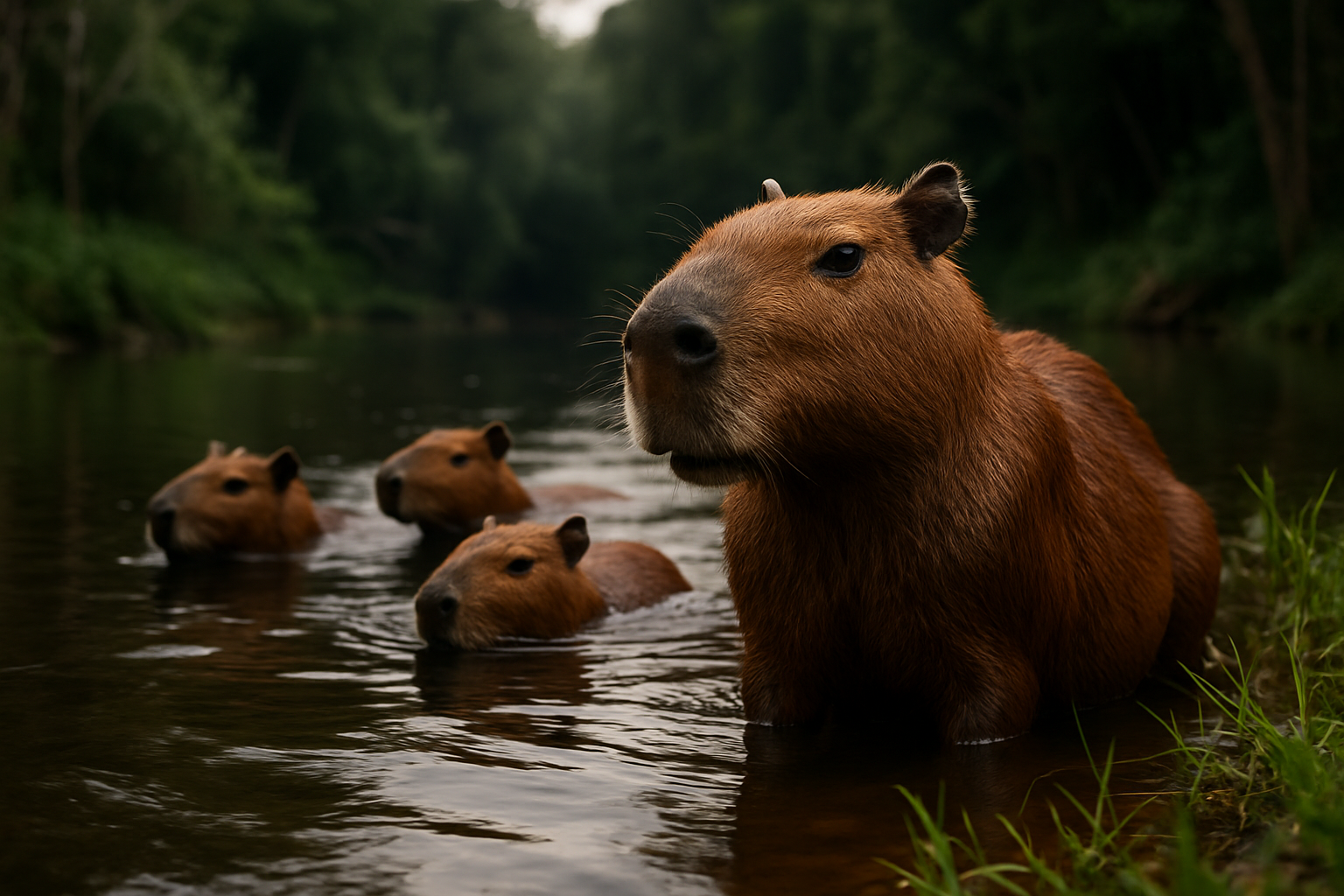Unraveling the Mysteries of Capybara Social Dynamics
The world's largest rodent, the capybara, has long fascinated animal enthusiasts with its unique behaviors and social structure. These gentle giants, native to South America, are known for their gregarious nature and complex social interactions. In this article, we'll delve deep into the intriguing world of capybara social dynamics, exploring their group living, communication methods, and the factors that shape their social bonds.

The Foundation of Capybara Society
Capybaras are highly social animals, living in groups that can range from a few individuals to as many as 100 members. These groups, known as herds, are typically composed of a dominant male, several females, their offspring, and subordinate males. The size and composition of these herds can vary depending on factors such as habitat quality, predation pressure, and seasonal changes.
At the core of capybara society is a hierarchical structure that governs social interactions and resource allocation. The dominant male, often the largest and most aggressive individual, plays a crucial role in maintaining order within the group. He defends the herd’s territory, mediates conflicts, and has priority access to food and mates.
Communication: The Language of Capybaras
Capybaras have developed a rich repertoire of vocalizations and body language to communicate with one another. Their vocal range includes barks, whistles, clicks, and purrs, each serving a specific purpose in their social interactions. For example, a sharp bark may signal danger, while a soft purr can indicate contentment or be used to soothe young capybaras.
In addition to vocalizations, capybaras rely heavily on scent marking to communicate. They possess scent glands on their snouts, which they use to mark territory and identify group members. This olfactory communication plays a vital role in maintaining social bonds and territorial boundaries.
Cooperative Living: Strength in Numbers
One of the most fascinating aspects of capybara social dynamics is their cooperative behavior. These animals have been observed engaging in mutual grooming, shared vigilance, and even communal nursing of young. This cooperative approach to living provides numerous benefits, including increased protection from predators and improved foraging efficiency.
Capybaras also exhibit a remarkable level of social tolerance, often allowing other species to share their space and resources. This behavior has led to the iconic images of capybaras lounging with birds, turtles, and even small monkeys perched on their backs.
Mating and Reproduction: A Social Affair
The reproductive behavior of capybaras is deeply intertwined with their social structure. Mating typically occurs in the water, with the dominant male having primary access to receptive females. However, subordinate males may also mate opportunistically, leading to a complex system of paternity within the herd.
Female capybaras often synchronize their breeding cycles, giving birth around the same time. This synchronization allows for communal care of young, with mothers sometimes nursing each other’s offspring. This cooperative breeding strategy enhances the survival chances of the young capybaras and strengthens social bonds within the group.
Adaptations to Human Presence
As human populations expand into capybara habitats, these adaptable creatures have shown remarkable flexibility in their social behaviors. In some urban areas, capybaras have formed smaller, more tightly-knit groups to navigate the challenges of human-dominated landscapes. These urban capybaras have even been observed using man-made structures and adapting their activity patterns to coexist with humans.
The increasing interactions between capybaras and humans have led to the development of capybara-focused ecotourism in some regions. This growing industry, estimated to generate several million dollars annually, has highlighted the need for sustainable management practices that consider the social needs of these charismatic animals.
Conservation Implications
Understanding capybara social dynamics is crucial for effective conservation efforts. As these animals face threats from habitat loss and hunting, preserving their complex social structures becomes increasingly important. Conservation strategies must take into account the need for adequate space to maintain healthy group sizes and the preservation of key habitats that support their social behaviors.
Research into capybara social dynamics also has broader implications for our understanding of social evolution in mammals. By studying these highly social rodents, scientists can gain insights into the factors that drive the development of complex societies across different species.
In conclusion, the social world of capybaras is a rich tapestry of interactions, communication, and cooperation. From their hierarchical group structures to their remarkable adaptability in the face of human encroachment, capybaras offer a fascinating model for studying animal societies. As we continue to unravel the mysteries of their social dynamics, we not only gain a deeper appreciation for these charismatic creatures but also valuable insights that can inform conservation efforts and our understanding of social behavior in the animal kingdom.





